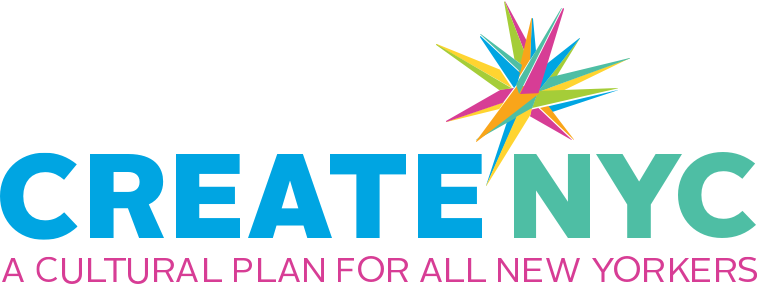Improve cultural access for historically marginalized groups of artists, audiences, and cultural workers
Action 1Awarded additional funding to 51 NYC-based nonprofits as part of the CreateNYC Language Access Fund in support of programming that increases access to arts and culture for those whose primary language is not English.
Action 2Awarded additional funding to 50 NYC-based nonprofits as part of the CreateNYC Disability Forward Fund in support of programming that deepen engagement in the arts for people with disabilities as artists, cultural workers, and audience members.
Action 3Administered $2.8M through City Council's SU-CASA initiative, which supported virtual arts engagement programming for older adults across the City.
Action 4Administered $5.5 million through City Council's Coalition of Theaters of Color, which supported 65 organizations run by and serving people of color to improve access to culture for historically marginalized communities.
Action 5Funded 24 capital projects at cultural organizations across the City to improve the physical accessibility of their facilities.
Action 6Provided $750,000 to support programming at 25 arts education organizations and to support the Arts Educator Emergency Relief Fund from New York City Arts in Education Roundtable, which awarded 340 unrestricted grants of $1,000 each. DCLA’s COVID-19 impact survey found that greatest loss of artistic employment comes from arts education organizations.
Action 7Administered $660,000 through City Council's SU-CASA initiative, which supported virtual arts engagement programming for older adults across the City.
Action 8Administered $3.55 million through City Council's Coalition of Theaters of Color, which supported 50 organizations run by and serving people of color to improve access to culture for historically marginalized communities.
Action 9Administered $5.6 million through City Council's Cultural Immigrant Initiative, which supported 175 cultural organizations with programs serving immigrant communities and/or relating to topics of immigration.
Action 10Awarded additional funding to 33 NYC-based nonprofits as part of the CreateNYC Disability Forward Fund in support of programming that deepen engagement in the arts for people with disabilities as artists, cultural workers, and audience members.
Action 11Renewed funding to 33 NYC-based nonprofits as part of the CreateNYC Language Access Fund in support of programming that increases access to arts and culture for those whose primary language is not English (incorporated in their total FY21 CDF grant award amount).
Action 12Continued funding Culture Pass with the City's 3 library systems, which distributed passes to library patrons, enabling New Yorkers to visit cultural institutions and participate in programs for free.
Action 13Provided $1 million through the local arts councils for City Council's SU-CASA initiative, which supported 102 distinct arts residencies for older adults at senior centers across the City.
Action 14Administered $6.8 million through City Council's Cultural Immigrant Initiative, which supported 193 cultural organizations with programs serving immigrant communities and/or relating to topics of immigration.
Action 15Administered $3.5 million through City Council's Coalition of Theaters of Color, which supported 49 organizations run by and serving people of color to improve access to culture for historically marginalized communities.
Action 16Renewed funding to 19 NYC-based nonprofits as part of the CreateNYC Disability Forward Fund in support of programming that deepen engagement in the arts for people with disabilities as artists, cultural workers, and audience members.
Action 17Funded capital projects at 8 cultural organizations across the City to improve the physical accessibility of their facilities.
Action 18Awarded funding to 36 NYC-based nonprofits as part of the CreateNYC Language Access Fund in support of programming that increases access to arts and culture for those whose primary language is not English.
Action 19Administered $3.3 million through City Council's SU-CASA initiative, which supported 67 distinct arts residencies for older adults at senior centers across the City.
Action 20Administered $6.4 million through City Council's Cultural Immigrant Initiative, which supported 182 cultural organizations with programs serving immigrant communities and/or relating to topics of immigration.
Action 21Funded eight capital projects at cultural organizations across the City to improve the physical accessibility of their facilities.
Action 22Launched Culture Pass with the City's 3 library systems, which distributed over 65,000 passes to library patrons, enabling 160,000 New Yorkers to visit 50 cultural institutions and participate in over 100 programs for free.
Action 23Increased support for the Language Access Fund by 85% from the previous year across 72 organizations with non-English cultural programming, including American Sign Language, and for projects serving Multilingual Learners in NYC public schools.
Action 24Launched the Disability Forward Fund, which supported 22 cultural programs committed to serving artists, cultural workers, and audiences with disabilities.
Action 25Administered $2 million through City Council's Coalition of Theaters of Color, which supported 44 organizations run by and serving people of color to improve access to culture for historically marginalized communities.
Action 26Set an annual spending goal of $2.2 million to improve physical accessibility at cultural organizations through eligible capital projects starting with the FY 19 budget cycle.
Action 27Launched the Language Access Fund, which supported 32 organizations with non-English cultural programming, including American Sign Language, and for projects serving Multilingual Learners in NYC public schools.
Action 28Facilitated, in partnership with the Department for the Aging, and the New York Community Trust, Lifetime Arts, The Brookdale Center on Aging at Hunter College, and LiveON NY, professional development workshops aimed at providing individual artists and organizations tools to deliver creative aging programs to low-income seniors.
Action 29Designed, in partnership with Age-Friendly New York and the National Center for Creative Aging, Building Creativity for Arts and Culture, an online resource guide that increases visibility for older adult programs at cultural organizations across the city.
Action 30Administered $5.9 million through City Council's Cultural Immigrant Initiative, which supported 264 cultural organizations with programs serving immigrant communities and/or relating to topics of immigration.
Action 31Administered $2 million through City Council's Coalition of Theaters of Color, which supported 44 theater organizations run by and serving people of color to improve access to culture for historically marginalized communities.
Action 32Administered $2.5 million through City Council's SU-CASA initiative, which supported 107 distinct arts residencies for older adults at senior centers across the City.

